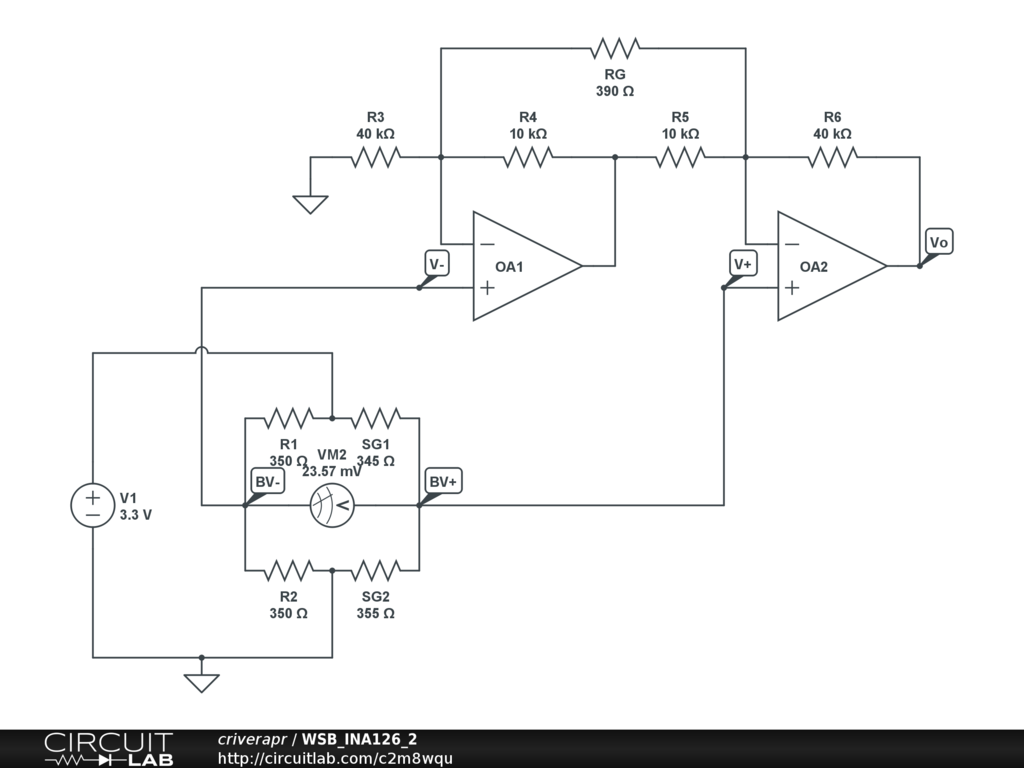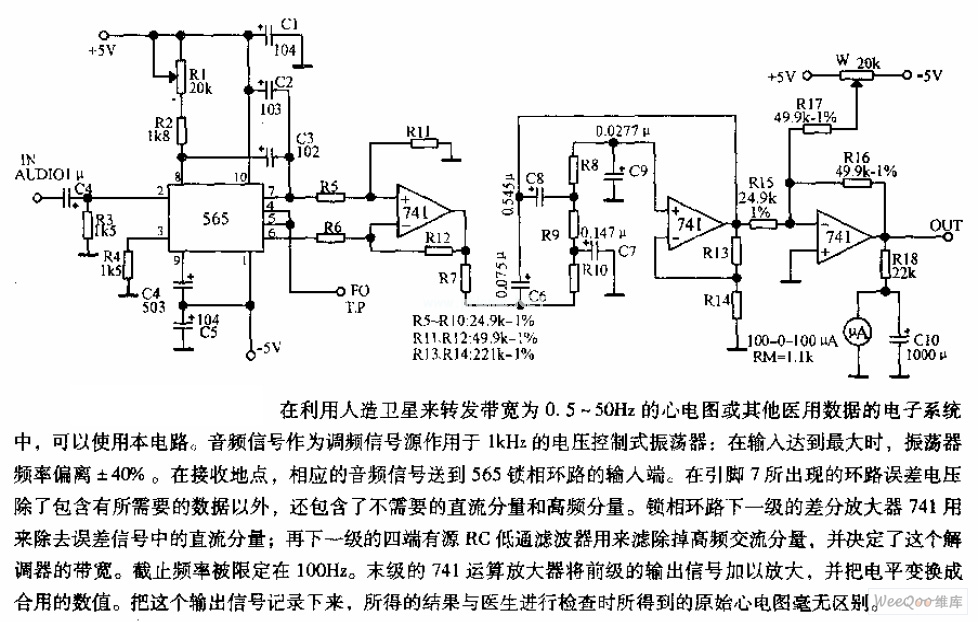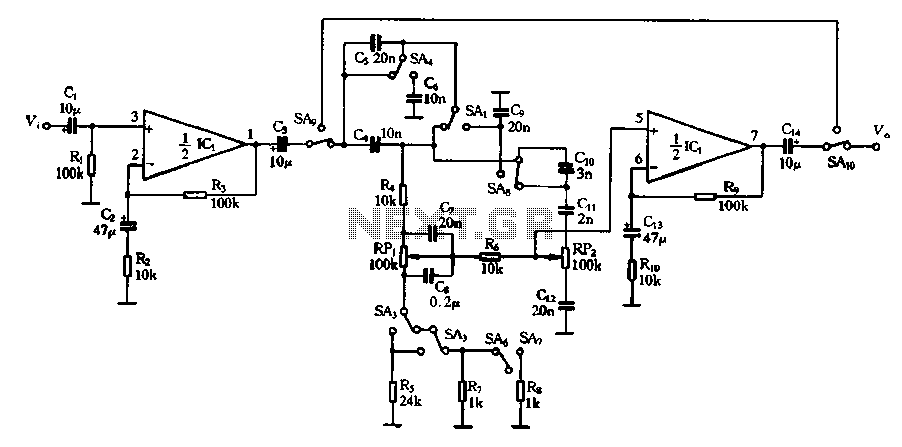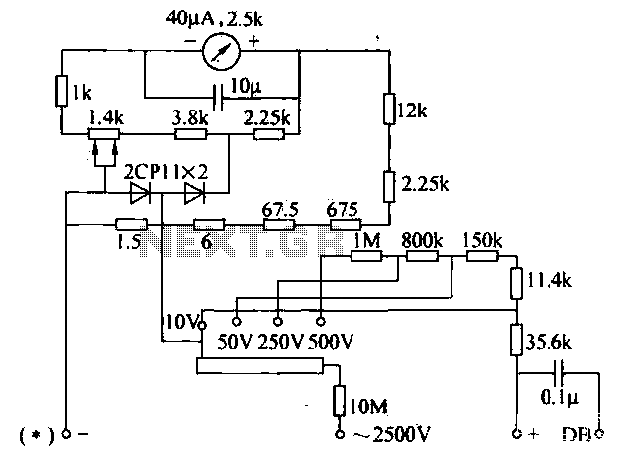
Adjustable output voltage of the series regulator circuit diagram
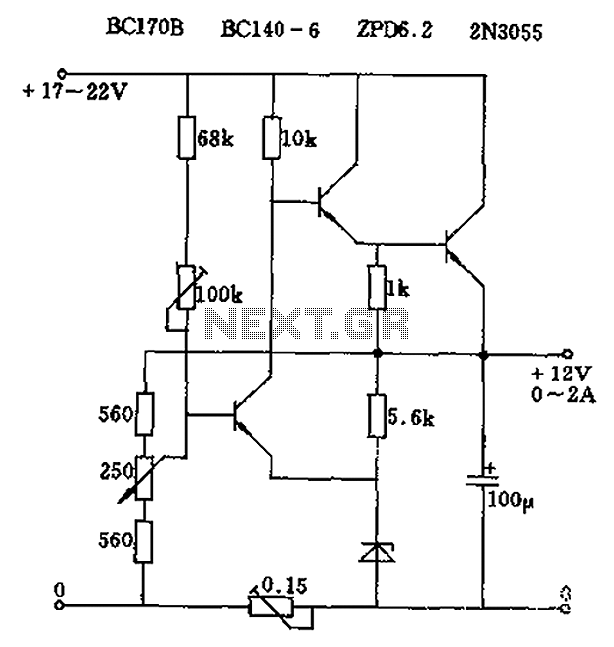
The circuit output voltage can be continuously adjusted from zero to its maximum value. The baseline is established by a constant current sourced from the auxiliary power supply circuit. The reference current of 500 microamperes can be fine-tuned to approximately 7mA by adjusting the resistance. This current flows through a 2.5k ohm potentiometer, creating a voltage drop that allows the output voltage (Ua) to be adjusted continuously from zero to its maximum.
The described circuit employs a potentiometer to facilitate the adjustment of the output voltage. The 2.5k ohm potentiometer serves as a variable resistor, enabling fine control over the current flowing through it. When the reference current of approximately 7mA is established, the voltage across the potentiometer can be calculated using Ohm's Law (V = I × R). As the resistance is varied, the voltage drop across the potentiometer changes, thus allowing the output voltage (Ua) to be modulated between zero and its maximum value.
In practical applications, this configuration is commonly used in power supply circuits where a variable output voltage is required. The constant current source ensures stability in the output, preventing fluctuations that could arise from varying load conditions. Additionally, the use of a potentiometer allows for easy manual adjustments, making it suitable for applications where precise voltage settings are necessary.
To enhance the performance of this circuit, consideration should be given to the power ratings of the components used, particularly the potentiometer, to ensure they can handle the maximum current without overheating. Furthermore, circuit protection mechanisms, such as fuses or current limiting resistors, may be incorporated to safeguard against potential overload situations. Overall, this circuit design offers a reliable solution for applications requiring adjustable voltage outputs. Circuit output voltage can be continuously adjusted from zero to maximum. Its baseline is a constant current from the auxiliary power supply circuit. 500 Europe reference curre nt can be adjusted to fine-tune the resistance, and its value should be around 7mA. This current flows through the 2.5k Europe potentiometer and the voltage drop is formed from zero to maximum output voltage thereon, so that the output voltage Ua can be continuously adjustable from zero to maximum.
The described circuit employs a potentiometer to facilitate the adjustment of the output voltage. The 2.5k ohm potentiometer serves as a variable resistor, enabling fine control over the current flowing through it. When the reference current of approximately 7mA is established, the voltage across the potentiometer can be calculated using Ohm's Law (V = I × R). As the resistance is varied, the voltage drop across the potentiometer changes, thus allowing the output voltage (Ua) to be modulated between zero and its maximum value.
In practical applications, this configuration is commonly used in power supply circuits where a variable output voltage is required. The constant current source ensures stability in the output, preventing fluctuations that could arise from varying load conditions. Additionally, the use of a potentiometer allows for easy manual adjustments, making it suitable for applications where precise voltage settings are necessary.
To enhance the performance of this circuit, consideration should be given to the power ratings of the components used, particularly the potentiometer, to ensure they can handle the maximum current without overheating. Furthermore, circuit protection mechanisms, such as fuses or current limiting resistors, may be incorporated to safeguard against potential overload situations. Overall, this circuit design offers a reliable solution for applications requiring adjustable voltage outputs. Circuit output voltage can be continuously adjusted from zero to maximum. Its baseline is a constant current from the auxiliary power supply circuit. 500 Europe reference curre nt can be adjusted to fine-tune the resistance, and its value should be around 7mA. This current flows through the 2.5k Europe potentiometer and the voltage drop is formed from zero to maximum output voltage thereon, so that the output voltage Ua can be continuously adjustable from zero to maximum.
